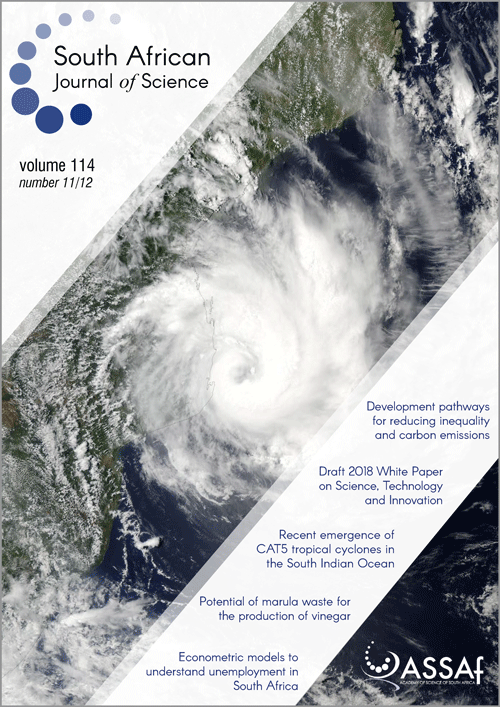Productive knowledge, poverty and the entrepreneurial challenges of South African towns
DOI:
https://doi.org/10.17159/sajs.2018/4765Keywords:
enterprise richness, entrepreneurial space, poverty trap, economic development, poor communitiesAbstract
Stagnant exports per capita and growing poverty in South Africa necessitated an examination of the links between the levels of productive knowledge (measured as enterprise richness), poverty (measured as Enterprise Dependency Indices) and entrepreneurial development (measured as the number of enterprises) in 188 South African towns. Two statistically significant relationships were used to examine groups of towns with different poverty levels: a linear relationship of population size and enterprise numbers, and a power law relationship of population size and enterprise richness. Increased poverty levels severely impact current and future enterprise development, despite the fact that entrepreneurial space develops similarly in wealthy and poor towns. Two broad types of entrepreneurial opportunities were discerned: starting more enterprises of types that are already present in towns, and starting enterprises of types that have not been present before. The latter requires the expansion of productive knowledge. Doubling of productive knowledge (measured as enterprise richness) more than doubles the number of enterprises in towns. The economic growth of towns always requires additional enterprises of types not yet present. This requirement is more stringent in towns with fewer than 100 enterprises, but even in large towns, enterprise growth has a Pareto-like requirement of 20% of new enterprise types. There is evidence of a ‘catch-22’-like poverty trap for poor towns: they lack productive knowledge, yet to overcome poverty they need to have productive knowledge. Escaping this trap will be extremely difficult and development plans and policies should heed these findings.
Significance:
- The link between productive knowledge and the wealth/poverty status of South African towns is quantified.
- There is a ‘catch-22’-like poverty trap that is difficult to escape in poorer towns.
- These findings can assist in plans to combat poverty.
Published
Issue
Section
License

All articles are published under a Creative Commons Attribution 4.0 International Licence
Copyright is retained by the authors. Readers are welcome to reproduce, share and adapt the content without permission provided the source is attributed.
Disclaimer: The publisher and editors accept no responsibility for statements made by the authors
How to Cite
- Abstract 844
- PDF 736
- EPUB 226
- XML 422













.png)